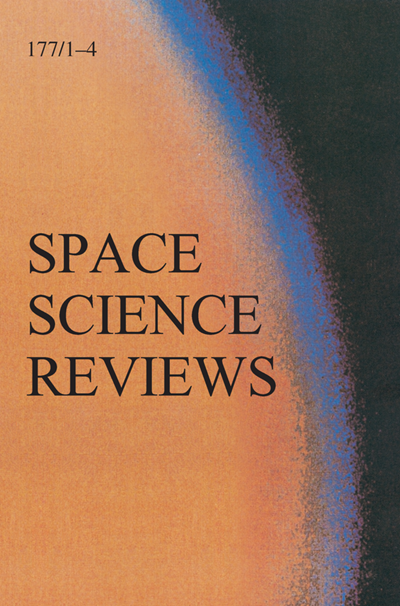内太阳系表面外逸层研究的未来方向
IF 7.4
2区 物理与天体物理
Q1 ASTRONOMY & ASTROPHYSICS
引用次数: 1
摘要
表面有界的外逸层是行星环境和岩石体表面复杂相互作用的结果。在研究这样一个外逸层的产生时,必须考虑不同的驱动因素,包括光子、离子、电子和影响不同物体表面的流星体群。对不同种类物质的外逸层观测,即挥发物或耐火材料、碱金属或水族物质,为工作过程、驱动因素、表面性质和释放效率提供了线索。这些信息使我们能够调查这些尸体是如何进化的,以及将如何进化;此外,它允许我们推断哪些过程在不同的环境中占主导地位。在这篇综述中,我们关注未解决的问题和需要深入了解表面释放过程、驱动因素和外逸层特征的测量。还讨论了即将到来的空间任务、地面观测和建模的新方向所提供的未来机会。本文章由计算机程序翻译,如有差异,请以英文原文为准。
Future Directions for the Investigation of Surface-Bounded Exospheres in the Inner Solar System
Abstract Surface-bounded exospheres result from complex interactions between the planetary environment and the rocky body’s surface. Different drivers including photons, ion, electrons, and the meteoroid populations impacting the surfaces of different bodies must be considered when investigating the generation of such an exosphere. Exospheric observations of different kinds of species, i.e., volatiles or refractories, alkali metals, or water group species, provide clues to the processes at work, to the drivers, to the surface properties, and to the release efficiencies. This information allows the investigation on how the bodies evolved and will evolve; moreover, it allows us to infer which processes are dominating in different environments. In this review we focus on unanswered questions and measurements needed to gain insights into surface release processes, drivers, and exosphere characterizations. Future opportunities offered by upcoming space missions, ground-based observations, and new directions for modelling are also discussed.
求助全文
通过发布文献求助,成功后即可免费获取论文全文。
去求助
来源期刊

Space Science Reviews
地学天文-天文与天体物理
CiteScore
19.70
自引率
3.90%
发文量
60
审稿时长
4-8 weeks
期刊介绍:
Space Science Reviews (SSRv) stands as an international journal dedicated to scientific space research, offering a contemporary synthesis across various branches of space exploration. Emphasizing scientific outcomes and instruments, SSRv spans astrophysics, physics of planetary systems, solar physics, and the physics of magnetospheres & interplanetary matter.
Beyond Topical Collections and invited Review Articles, Space Science Reviews welcomes unsolicited Review Articles and Special Communications. The latter encompass papers related to a prior topical volume/collection, report-type papers, or timely contributions addressing a robust combination of space science and technology. These papers succinctly summarize both the science and technology aspects of instruments or missions in a single publication.
 求助内容:
求助内容: 应助结果提醒方式:
应助结果提醒方式:


